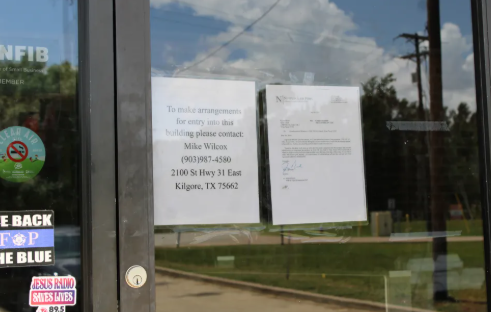Pool: Reading white supremacy
Published 5:00 am Monday, November 6, 2023

- Frank T. Pool
I am writing this column from a hotel room in St. Francisville, Louisiana. It’s Sunday morning, and I had breakfast in a dining room with the TV tuned into a Black church service.
As it happened, there were only four old white guys eating breakfast and another younger white fellow working in the lobby, but I didn’t hear anyone say, “let’s change this to Sex in the City,” or “I wonder if Rachel Maddow is on?”
Trending
I have been reading about white supremacy for the last class in an eight-week course I presented to adult learners many of whom were older than I am. It was a joy to work with intelligent and educated people who met a side chapel in a Lutheran church to learn about slavery, Reconstruction, and Jim Crow.
One of the sources I kept returning to was the historian William Archibald Dunning, (1857-1922) who mentored many young scholars over his long career. They collectively became known as the Dunning School in regard to their central thesis, that Reconstruction was a failure brought on by Northern tyranny and cupidity, Negro ignorance and credulity, and blatant corruption and overspending.
This interpretation of history became standard in American public schools, as Donald Yacovone demonstrates in his recent book “Teaching White Supremacy.” I know from experience that it trickled into other schools, as I encountered it in class at the Catholic school I attended in Longview.
The great benefit you get from reading people like Dunning is that he is so open about his belief that the government and social structures of this country should be organized to benefit white men. He was proud of his beliefs and in the overthrow of Reconstruction with its disenfranchisement of the freedmen.
In an article available online in the archives of The Atlantic, Dunning summarizes the ways in which Reconstruction was reversed, and a new political and social regime established.
He says there were three phases. The first phase was in the late 1860s and early ‘70s. It involved violent suppression of the Black vote, including groups like the Ku Klux Klan and others. Whippings, threats, and murders were used to keep Black men from voting Republican. There were riots and outright massacres in places like Memphis and New Orleans.
Trending
These actions led Congress and President Grant to pass and sign the Civil Rights Acts of 1875 which led to the suppression of the Klan for a few years. A dozen years later the Supreme Court would invalidate those laws.
The second phase of the overthrowing of Reconstruction was after what its supporters called “Redemption,” the election of Democratic legislatures and governors. This took place in Texas in 1873 and in other Southern states by 1876.
During this period of around 15 years, Black men were not legally denied the vote, but there was a great deal of ballot box stuffings, voter suppression, and other electoral shenanigans. In an era when the parties themselves produced the ballots, in some counties Democrat ballots were printed on very thin paper that could sometimes be slipped into ballot boxes along with others. When the vote count showed more votes than were registered, laws provided that an election judge — always a Democrat in these years — would draw ballots blindfolded from the box to be discarded and the remainder counted, he would know by feel which votes were for each party.
The last phase of establishing white supremacy began just before 1890, as more Southern states adopted the “Mississippi Plan.” This involving amending the state constitutions to require literacy tests and poll taxes as requirements for voting. A barely-literate white voter might be given a short passage of the state constitution to read and not challenged on its interpretation; a literate voter of color would be grilled on the specifics of, say, state incorporation laws of charitable institutions. To make sure no whites would be disenfranchised, the “grandfather clause” provided that voters whose grandparents had been able to vote in 1860 would be able to vote.
Because these laws did not explicitly mention race or color, they did not violate the 15th Amendment. Besides, the Supreme Court ruled in “Williams v. Mississippi” that these laws were constitutional. They would accept the doctrine of “separate but equal” in the infamous “Plessy v. Ferguson” decision.
Thus the legal basis for segregation and white supremacy was established. Writers like Dunning and his contemporary Woodrow Wilson openly celebrated the results. It is this very openness that is valuable in addressing the issue today.
In 1901, Theodore Roosevelt invited Booker T. Washington to the White House for dinner. Despite Washington’s willingness to urge African-Americans to give up their quest for political equality and focus on gaining industrial skills to build modestly prosperous lives, this extension of courtesy to a Negro outraged Southern sentiment.
What people call white supremacy today has changed greatly. Nowadays, academics can get their fifteen minutes of fame by denouncing classics (Greek and Roman literature) and classical music as instruments of “white supremacy.” Those are ridiculous charges, and at any event, what these privileged and coddled academics call white supremacy is but a pale imitation of what it used to be.
Dunning was a true scholar, albeit a racist one. I admit that I don’t follow contemporary white supremacist pseudo-intellectuals closely, but I doubt their views will gain the general acceptance of the Dunning School. Too much has changed.
It’s a good thing that our ideals always seem tantalizingly just outside our grasp, because the striving for the good is central to human flourishing. But when we use loaded language, it’s good to see where that language came from, and how it has changed, and to evaluate whether it is accurate description or rhetorical weapon. Call me prickly, but I get irritated by pseudo-intellectuals of left or right.
I am heading to Natchez today, and up the Natchez Trace to Vicksburg, where I have a letter to deliver. It was written in 1863 by a Confederate soldier stationed by the Mississippi 20 miles south of that besieged city.
The letter was from an ancestor of a friend. I plan to stand with two of my cousins at the site where our great-grandfather defended the battlements on May 19, 1863. I will walk into the past, national, familial, and personal.
This morning is bright. Onward to Natchez, and beyond.






